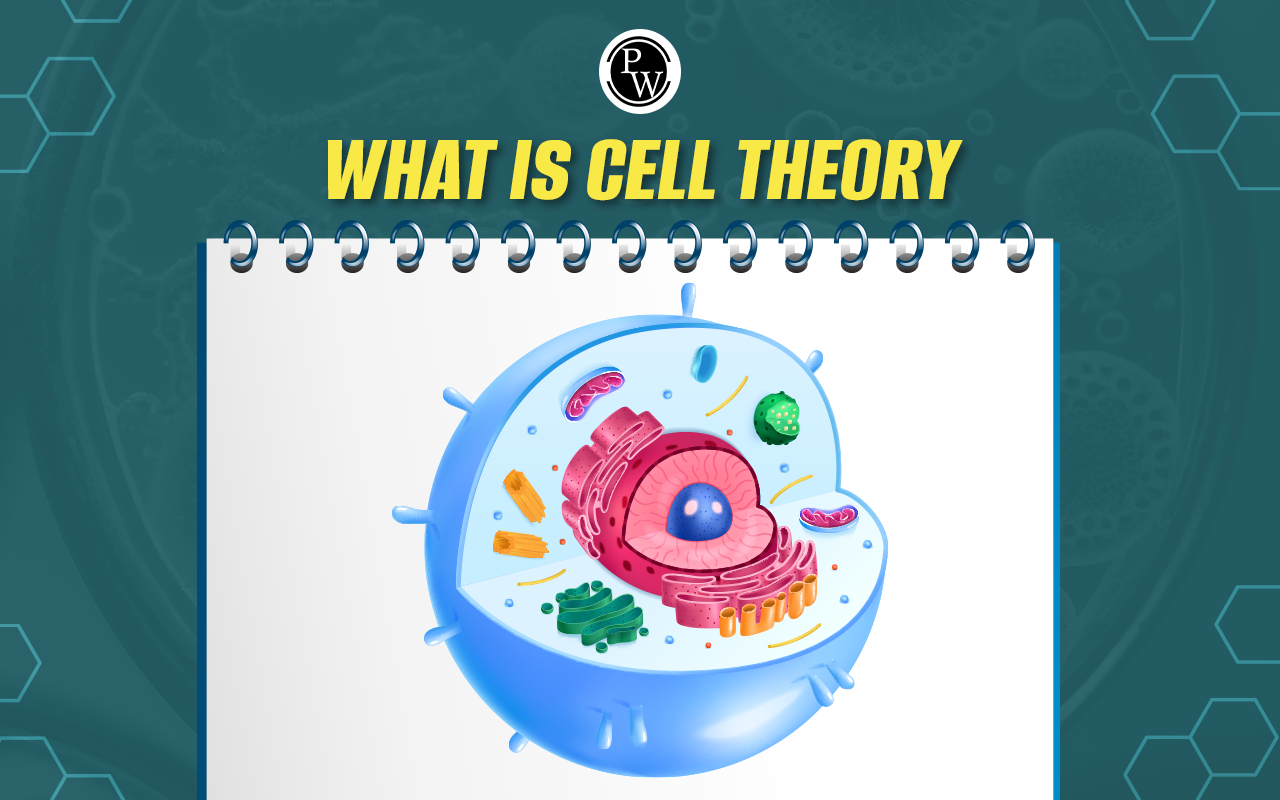
The p-Block Elements MCQs: To succeed in the NEET exam, it is essential to thoroughly understand p-block elements through multiple-choice questions (MCQs). p-Block elements, which are located in groups 13 to 18 of the periodic table, are a major focus in the NEET Chemistry syllabus . The p-Block Elements MCQs evaluate your knowledge of key concepts such as periodic trends, electronic configurations, and the chemical properties of these elements.
By regularly practicing p-block elements MCQs, you can improve your problem-solving skills and become familiar with the types of questions that may appear on the exam. This consistent practice will help you be better prepared and increase your chances of doing well in the NEET exam. Students can practice the p-Block Elements MCQs provided in the article below.The p-Block Elements MCQs NEET
For NEET preparation, practicing MCQs on p-block elements is essential. These questions evaluate your understanding of key concepts such as periodic trends, oxidation states, and the chemical properties of these elements. Regularly working on these MCQs helps you remember and apply your knowledge more effectively during the exam, thereby improving your performance. Furthermore, reviewing past NEET questions related to p-block elements can give you valuable insights into common question formats and exam patterns, allowing you to adjust your study strategy accordingly.Also Check:
The p-Block Elements MCQs Class 12
In Class 12, p-block elements are a crucial component of the Chemistry syllabus, affecting both board exams and NEET preparation. To handle questions about this topic effectively, a thorough understanding of p-block elements is essential. Start by studying the fundamental concepts related to these elements in detail. Regular practice with MCQs helps reinforce these concepts, improving both your accuracy and speed in answering questions. To strengthen your grasp of the subject, make use of class notes, textbooks, and additional practice materials. This comprehensive approach will ensure you are well-prepared for both your board exams and the NEET.
The p-Block Elements MCQs with Answers
Practicing MCQs on p-block elements with provided answers is highly beneficial for NEET preparation. This approach offers immediate feedback, which helps you identify and correct mistakes promptly. The detailed explanations that accompany the answers clarify complex topics and strengthen your understanding. Regularly working with MCQs that include answers not only improves your knowledge of p-block elements but also boosts your confidence and problem-solving abilities. This method ensures thorough preparation, making it easier for you to tackle similar questions in the NEET exam with greater accuracy. By consistently applying these strategies and practicing MCQs, you will significantly improve your understanding of p-block elements and enhance your overall performance in NEET.Q 1. A single N-N bond is weaker than a single P-P bond. This is because of;
(1) larger N-N bond length in comparison to P-P bond length. (2) high interelectronic repulsion of the non-bonding electrons, owing to the small N-N bond length in comparison to that in the P-P single bond. (3) higher electronegativity of N in comparison to P. (4) smaller atomic size of N as compared to that of P.Ans. 2
Q 2. Which one of the following does not show allotropy?
(1) Nitrogen (2) Phosphorus (3) Arsenic (4) AntimonyAns. 1
Q 3. Which of the following group 15 elements forms metallic bonds in an elemental state?
(1) As (2) P (3) Sb (4) BiAns. 4
Q 4. Metalloids in the carbon and nitrogen families are;
(1) Si, As (2) P, Sn (3) Pb, Sb (4) C, BiAns. 1
Q 5. Assertion (A): N2 is less reactive than P4.
Reason (R): Nitrogen has more electron gain enthalpy than phosphorous.
(1) Both Assertion (A) and Reason (R) are true and Reason (R) is the correct explanation of Assertion (A). (2) Both Assertion (A) and Reason (R) are true but Reason (R) is not the correct explanation of Assertion (A). (3) Assertion (A) is true and Reason (R) is false. (4) Assertion (A) is false and Reason (R) is true.Ans. 3
Q 6. Maximum covalency of nitrogen is;
(1) 3 (2) 4 (3) 5 (4) 6Ans. 2
Q 7. The correct statement about phosphorus atom is;
(1) It has 5 vacant orbitals in the valence shell. (2) It has 3 unpaired electrons. (3) Nine electrons have similar spin. (4) All of theseAns. 4
Q 8. Which is true regarding nitrogen? (C.E.T.)
(1) Less electronegative. (2) Has low ionisation enthalpy. (3) d-orbitals are available. (4) Ability to form pπ-pπ bonds with itself.Ans. 4
Q 9. p-block elements are those elements in which the last electron enters in;
(1) p-orbital (2) s-orbital (3) d-orbital (4) None of theseAns. 1
Q 10. Nitrogen doesn't form pentahalide due to non-availability of;
(1) s orbital (2) p orbital (3) d orbital (4) None of theseAns. 3
Q 11. What causes dinitrogen to be chemically inert?
(1) Multiple bond formation in the molecule. (2) Presence of bond polarity. (3) Large internuclear distance. (4) Low bond energy.Ans. 1
Q 12. The tendency to exhibit -3 oxidation state ______ down the group.
(1) decreases (2) increases (3) remains same (4) None of theseAns. 1
Q 13. Which elements of group 15 are metalloids?
(1) P (2) N (3) Sb (4) BiAns. 3
Q 14. Which of the following statements is not true for phosphorus?
(1) Phosphorus is a non-metal. (2) It exists as a tetrahedral molecular solid. (3) Phosphorus is less reactive than nitrogen. (4) The P-P bond is much weaker than the N ≡ N bond.Ans. 3
Q 15. Statement-I: Phosphorus has a higher melting point due to its larger size than nitrogen.
Statement II: Nitrogen is inert due to the formation of triple bonds and has a lower covalence due to the non-availability of d-orbitals.
(1) Statement-I and Statement-II both are correct. (2) Statement I is correct but Statement II is incorrect. (3) Statement I is incorrect but Statement II is correct. (4) Statement-I and Statement-II both are incorrect.Ans. 1
Q 16. Atomic radii of group 15 elements are of the orde r; (1) N > P > As > Bi > Sb (2) N > P > As > Sb > Bi (3) N < P < As < Sb < Bi (4) N < P < As < Sb > BiAns. 3
Q 17. In group 15, the melting points of the elements;
(1) increase regularly on moving down the group. (2) decrease regularly on moving down the group. (3) First decrease up to As and then increase to Bi. (4) first increase from N to As and then decrease to Bi.Ans. 4
Q 18. Which of the following does show maximum allotropy?
(1) Nitrogen (2) Phosphorus (3) Arsenic (4) AntimonyAns. 2
Q 19. The metallic character among the Group 15 elements increases down the group due to;
(1) increase in ionization energy. (2) increase in atomic size. (3) increase in electronegativity. (4) None of theseAns. 2
Q 20. The atomicity of nitrogen and phosphorus is respectively.
(1) 2 and 2 (2) 2 and 3 (3) 2 and 4 (4) 2 and 5Ans. 3
Q 21. Which of the following elements in Group 15 exhibits the highest melting point?
(1) Nitrogen (2) Phosphorus (3) Arsenic (4) BismuthAns. 3
Q 22. Which of the following Group 15 elements exists in the gaseous phase at room temperature and pressure?
(1) Nitrogen (2) Phosphorus (3) Arsenic (4) AntimonyAns. 1
Q 23. The boiling point of phosphorus is higher than that of nitrogen due to;
(1) Greater atomic radius of phosphorus. (2) Presence of stronger London dispersion forces in phosphorus. (3) Higher electronegativity of phosphorus. (4) Presence of d-orbitals in phosphorus.Ans. 2
Q 24. Which of the following Group 15 elements has the highest atomic radius?
(1) Nitrogen (2) Phosphorus (3) Arsenic (4) BismuthAns. 4
Q 25. Which Group 15 element has the highest first ionization energy?
(1) Nitrogen (2) Phosphorus (3) Arsenic (4) BismuthAns. 1
Q 26. Among the Group 15 elements, which one has the highest electronegativity value?
(1) Nitrogen (2) Phosphorus (3) Arsenic (4) BismuthAns. 1
Q 27. The element in Group 15 with the lowest melting point is;
(1) Nitrogen (2) Phosphorus (3) Arsenic (4) BismuthAns. 1
Q 28. What is the oxidation state of nitrogen in dinitrogen trioxide?
(1) +1 (2) +2 (3) +3 (4) +4Ans. 3
Q 29. What is the range of the oxidation states shown by nitrogen in its oxides?
(1) +1 to +3 (2) +2 to +4 (3) +1 to +2 (4) +1 to +5Ans. 4
Q 30. The three important oxidation states of phosphorus are;
(1) –3, +3 and +5 (2) –3, +3 and –5 (3) –3, +3 and +2 (4) –3, +3 and +4Ans. 1
Q 31. The oxidation state of phosphorus varies from;
(1) –1 to +3 (2) –3 to +3 (3) –3 to +5 (4) –5 to +1Ans. 3
Q 32. Among the Group 15 elements, which of the following has the least tendency to show the inert pair effect?
(1) Nitrogen (2) Phosphorus (3) Arsenic (4) BismuthAns. 1
Q 33. Nitrogen shows anomalous behaviour in its oxidation states because of;
(1) Its small atomic size. (2) Its ability to form multiple bonds. (3) Its higher electronegativity. (4) All of theseAns. 4
Q 34. Which of the following statements are not correct about the hydrides of group 15 elements;
(1) The hydrides of the elements of group 15 are ionic and have a planar triangular shape (2) The thermal stability of the hydrides decreases down the group (3) The basic character of the hydrides decreases down the group (4) The reducing nature of the hydrides increases down the groupAns. 1
Q 35. The trend in the hydrides from Bi to N is;
(1) bond length increases (2) bond length decreases (3) acidic nature increases (4) bond energy decreasesAns. 2
Q 36. The incorrect statement among the following is;
(1) Reducing the character of hydrides of group 15 increases down the group. (2) The basicity of hydrides of group 15 increases down the group. (3) Phosphorus and arsenic can form pπ-dπ bonds but not nitrogen. (4) None of theseAns. 2
Q 37. Which of the following is correct about VA group hydrides (from ammonia to bismuth)?
(1) Their thermal stability gradually increases. (2) Their ease of preparation gradually increases. (3) The electron pair donating nature gradually decreases. (4) The bond energies gradually increase.Ans. 3
Q 38. Among the hydrides of the 15th group, which is a strong reducing agent?
(1) Ammonia (2) Phosphine (3) Arsine (4) BismuthineAns. 4
Q 39. The number of oxides that are possible with nitrogen is;
(1) 4 (2) 3 (3) 6 (4) 5Ans. 4
Q 40. Ammonia is liquid and phosphene is gas. Why?
(1) Due to more molar mass ammonia has maximum vanderwall force of attraction. (2) Due to more molar mass ammonia has less Vanderwall force of attraction. (3) Due to the presence of intermolecular hydrogen bonding in ammonia. (4) Due to the absence of hydrogen bonding in ammonia.Ans. 3
Q 41. Which of the following oxide can act as both a reducing and oxidising agent?
(1) Dinitrogen oxide (2) Nitric oxide (3) Dinitrogen pentoxide (4) None of theseAns. 2
Q 42. Ammonia is a Lewis base and acts as a complexing agent because;
(1) It accepts electron pairs. (2) It is neither an electron pair donor nor an acceptor. (3) It acts as an electron pair donor. (4) It exhibits a covalency of more than five.Ans. 3
Q 43. Which of the following is the correct order of melting points of group 16 elements?
(1) O < S < Se < Te < Po (2) O < Se < S < Te < Po (3) O < S < Se < Te > Po (4) O < S < Se > Te < PoAns. 3
Q 44. Which of the following elements does not belong to group 16 of the periodic table?
(1) Oxygen (2) Phosphorus (3) Sulphur (4) SeleniumAns. 2
Q 45. Arrange the following elements in order of their increasing ionisation energies O, S, Se, Te, Po;
(1) Po, Te, Se, S, O (2) Se, Te, S, Po, O (3) Te, O, S, Po, Se (4) O, S, Se, Te, PoAns. 1
Q 46. Which of the following is a true chalcogen?
(1) Nitrogen (2) Oxygen (3) Polonium (4) ChlorineAns. 2
Q 47. The electron affinity of sulphur is;
(1) less than O but more than Se. (2) more than O but less than Se. (3) more than O and Se. (4) equal to O and Se.Ans. 1
Q 48. Which of the following is the correct order of electron gain enthalpy of group 16 elements?
(1) O > S > Se > Te > Po (2) S > O > Se > Te > Po (3) S > Se > Te > Po > O (4) S > Se > O > Te > PoAns. 3
Q 49. A group of 16 elements exists in a monoatomic state in the metallic lattice. It also exists in two crystalline forms. The metal is;
(1) S (2) Te (3) Po (4) SeAns. 3
Q 50. Which shows maximum catenation property?
(1) Te (2) S (3) Se (4) OAns. 2
Q 51. Which of the following is radioactive in nature?
(1) Oxygen (2) Sulphur (3) Tellurium (4) PoloniumAns. 4
Q 52. The chalcogen with the lowest electron affinity is;
(1) Oxygen (2) Sulphur (3) Selenium (4) TelluriumAns. 1
Q 53. Which group 16 element has the highest tendency for catenation?
(1) Oxygen (2) Sulphur (3) Selenium (4) PoloniumAns. 2
Q 54. Among the group 16 elements the only element that does not exist as an octa-atomic solid is;
(1) Sulphur (2) Selenium (3) Oxygen (4) TelluriumAns. 3
Q 55. Catenation is maximum in sulphur upto _____atoms.
(1) 8 (2) 9 (3) 7 (4) 10Ans. 1
Q 56. The order of electron affinity of O, S, N, and P is;
(1) O > P > S > N (2) O > N > S > P (3) P > N > S > O (4) S > O > P > NAns. 4
Q 57. Which is the most abundant group 16 element?
(1) Oxygen (2) Sulphur (3) Selenium (4) TelluriumAns. 1
Q 58. Which is the best oxidising agent among group 16 elements?
(1) Te (2) Se (3) O (4) SAns. 3
Q 59. The minimum oxidation of sulphur possible is;
(1) –1 (2) –2 (3) –4 (4) –6Ans. 2
Q 60. All the elements of the oxygen family are;
(1) Non-metals (2) Metalloids (3) Radioactive (4) PolymorphicAns. 4
Q 61. Which of the following elements will have the highest atomic radii?
(1) Se (2) Te (3) S (4) PoAns. 4
Q 62. There is a large difference between the melting and boiling point of oxygen and sulphur because;
(1) oxygen is more electronegative than sulphur. (2) sulphur has less ionisation enthalpy than oxygen. (3) oxygen exists as diatomic but sulphur as polyatomic. (4) None of theseAns. 3
Q 63. Which among the following group 16 elements exist in more than two allotropic states?
(1) Tellurium (2) Selenium (3) Polonium (4) OxygenAns. 2
Q 64. Group 16 Elements is also called;
(1) Pnicogens (2) Picogens (3) Halogens (4) ChalcogensAns. 4
Q 65. The element that shows the highest number of allotropes among VIA group elements;
(1) S (2) Te (3) Se (4) PoAns. 1
Q 66. Which of the following elements is metalloid?
(1) Selenium (2) Tellurium (3) Both of these (4) None of theseAns. 3
Q 67. Elements O, S, Se, and Te are commonly known as;
(1) Rare earth elements (2) Chalcogens (3) Halogens (4) PnictogensAns. 2
Q 68. Which of the following has the highest bond energy?
(1) O – O (2) S – S (3) Se – Se (4) Te – TeAns. 2
Q 69. Air consists of _______ oxygen.
(1) 22% (2) 23% (3) 21% (4) 24%Ans. 3
Q 70. Statement-I: Catenation is maximum in sulphur up to 8 atoms.
Statement-II: At room temperature, sulphur exists as S4.
(1) Statement-I and Statement-II both are correct. (2) Statement I is correct but Statement II is incorrect. (3) Statement I is incorrect but Statement II is correct. (4) Statement-I and Statement-II both are incorrect.Ans. 2
Q 71. Oxygen is gas but sulphur is solid because;
(1) oxygen is composed of discrete molecules while sulphur is polymeric. (2) molecular weight of sulphur is much higher than that of oxygen. (3) oxygen is a stronger oxidising agent than sulphur. (4) The boiling point of sulphur is much higher than that of oxygen.Ans. 1
Q 72. Anomalous behaviour of oxygen is due to the following;
(1) high electronegativity. (2) small atomic size. (3) non-availability of d-orbital. (4) All of theseAns. 4
Q 73. Hydrides of oxygen and sulphur differ in the physical state due to;
(1) the presence of intermolecular hydrogen bonding in the hydrides of oxygen. (2) more electronegativity of oxygen. (3) stronger S–S bonds compared to O–O bonds. (4) repulsion of lone pair of electrons on oxygen atoms.Ans. 1
Q 74. The reducing property of hydrides of Group VIA elements generally;
(1) increases down the group. (2) decreases down the group. (3) remains constant down the group. (4) fluctuates irregularly down the group.Ans. 1
Q 75. The bond angle in hydrides of Group VIA elements generally;
(1) increases down the group. (2) decreases down the group. (3) remains constant down the group. (4) fluctuates irregularly down the group.Ans. 2
Q 76. Dioxygen gas is paramagnetic due to the presence of;
(1) lone pairs of electrons. (2) unpaired electrons. (3) double bonds. (4) triple bonds.Ans. 2
Q 77. At room temperature and pressure, dioxygen gas exists in which state of matter?
(1) Solid (2) Liquid (3) Gas (4) PlasmaAns. 3
Q 78. The color of pure dioxygen gas is;
(1) blue. (2) colourless. (3) yellow. (4) green.Ans. 2
Q 79. The oxide that is soluble in water and forms an acidic solution is;
(1) calcium oxide. (2) aluminum oxide. (3) carbon dioxide. (4) sulfur dioxide.Ans. 4
Q 80. An example of an amphoteric oxide is;
(1) calcium oxide. (2) aluminum oxide. (3) carbon dioxide. (4) sulfur dioxide.Ans. 2
Q 81. Amphoteric oxides exhibit properties of both;
(1) metals and non-metals. (2) ionic and covalent compounds. (3) basic and acidic oxides. (4) reducing and oxidizing agents.Ans. 3
Q 82. Ozone is;
(1) an isobar of oxygen. (2) an isotope of oxygen. (3) a polymer of oxygen. (4) an allotrope of oxygen.Ans. 4
How to Approach The p-Block Elements MCQs?
The following are some tips for approaching multiple-choice questions (MCQs) on p-block elements:- Practice Regularly : Solve a range of MCQs to enhance your problem-solving abilities and pinpoint areas where you need improvement.
- Review Fundamental Concepts : Frequently revisit the basic principles of p-block elements to strengthen your understanding.
- Analyze Mistakes : When you make errors, carefully examine them to understand what went wrong and prevent similar mistakes in the future.
- Understand Key Concepts : Be knowledgeable about periodic trends, electronic configurations, and common valencies of p-block elements.
- Apply Concepts to Questions : Use periodic trends to predict properties, and be aware of common oxidation states and chemical reactions of p-block elements.
The p-Block Elements MCQs FAQs
Q. What are p-block elements and why are they important for NEET?
Q. How can practicing p-block elements MCQs improve NEET preparation?
Q. What should I focus on while studying p-block elements for NEET?
Q. How do MCQs with answers benefit NEET preparation?
Q. How can Class 12 students use p-block elements MCQs effectively?
Q. What strategies should I use to approach p-block elements MCQs?










